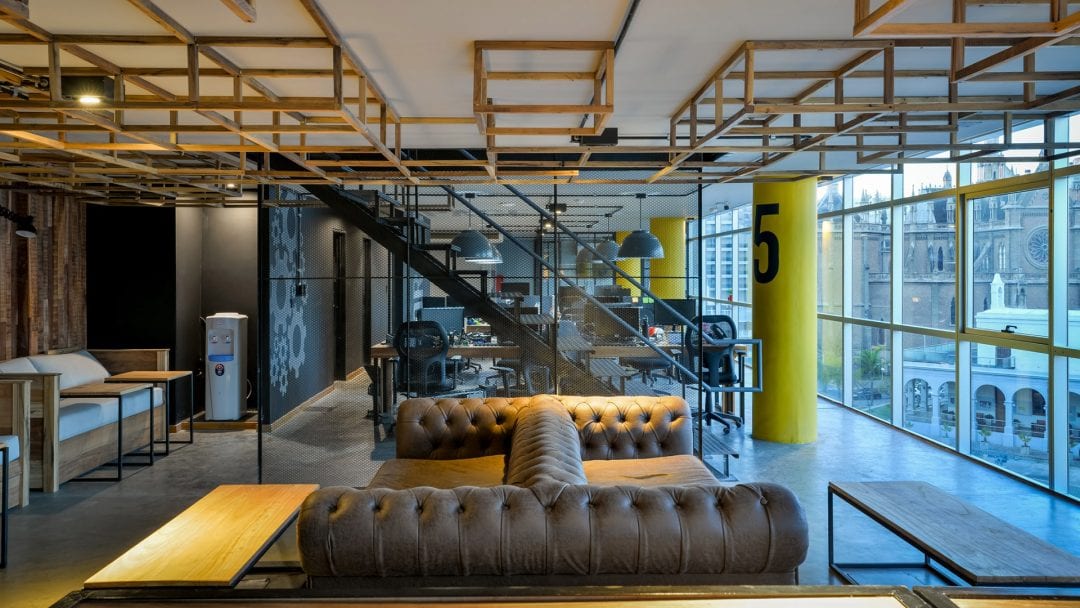When it comes to employee wellness programs, the benefits for small and midsize businesses (SMBs) are clear.
Employees who participate in wellness programs are happier, healthier, and more productive. For every dollar that companies invest in employee wellness, they get $1.50 to $3 back in the form of lower healthcare costs and higher retention rates.
But that doesn't mean all is well in wellness. For one thing, high participation in these programs is hard to achieve and sustain (one study found median employee wellness participation rates hover around 40% with incentives and 20% without). And the employees who do participate tend to be those who don't need it.

Furthermore, with 70% of U.S. employers now offering some type of wellness program, hackneyed ideas such as yoga classes or weight loss competitions are hardly the unique perks to attract job seekers that they used to be.
What does this all mean? Well, it means SMBs need to start getting creative.
To entice job seekers, keep program participation rates high, and reap the rewards of implementation, SMBs need to constantly think outside the box when it comes to new wellness activities and perks for their workers.
Not just physical wellness activities and perks either, but mental, social, and financial wellness too.
To give you some examples, we reached out to businesses that are doing something truly unique and creative with their employee wellness programs. Check out what these companies are doing, and learn how they can inspire new ideas at your SMB.
1. elMejorTrato.com pays off employee debt

The elMejorTrato.com office in Argentina (Image provided by interview source)
The program
CEO and co-founder Cristian Rennella noticed that many of his employees at elMajorTrato.com—a loan and insurance brokerage with customers in Mexico and South America—were struggling with a sadly familiar burden: crippling debt.
“We realized that it was a pattern," Rennella says. “It strongly affected our employees and their work."
Five years ago, Rennella decided to do something about it with a new financial wellness program. The company will pay off debt for employees who've been employed for at least a year and whose debt existed prior to their hiring, and will then deduct the monthly payments from the employee's paycheck, without any interest.
The results
To date, elMejorTrato.com has paid off more than $500,000 for 63 employees in the form of student loans, credit card debt, and even mortgage arrears. Since implementing its financial wellness program, employee retention at elMejorTrato.com has gone from 61% to 88%.
“The greatest thing we learned after implementing this wellness program is that it is the best way to create a solid team in the long term, like a family that helps each other," Rennella says.
The big takeaway for SMBs
Employee wellness programs don't always have to be additive. Sometimes, taking away a huge burden can be just as impactful to workers as giving them something new.
With 80% of Americans currently carrying debt, there's a very good chance that some sort of debt relief program would do wonders. But what else is keeping your employees up at night? Child care, for one. You could implement a daycare program or a child care stipend for working parents.
2. GreenPal lets workers rock out in a company music room

The GreenPal music room—minus the bass and drums, which were in use (Image provided by interview source)
The program
GreenPal, a startup that connects homeowners with lawn care providers, already had a special connection with music through its Nashville headquarters. But it wasn't until co-founder Gene Caballero started jamming with a new hire that he realized they had a chance to do something special.
“I've always played piano because it was a huge stress reliever," Caballero says. “One of our first hires in Nashville was a guitar player, and he and I would always play after work or at lunch. It made for a more fun-friendly office environment, so we decided to permanently dedicate one of our offices to the music room."
Today, GreenPal employees have access to a keyboard, guitar, bass guitar, and a set of drums that they can play whenever they want (as long as they're getting their work done).
The results
Gene says GreenPal's music room has been a deciding factor when job candidates were comparing offers from other companies. The room has even allowed one employee to take their musical chops to the next level.
“We have an employee that is currently pitching a few of his songs that he has written to some artist and repertoire (A&R) reps in Nashville," Caballero says.
The big takeaway for SMBs
Any time you can align your wellness initiatives with your company's mission, values, or culture, the better. It makes for a more cohesive employee experience and helps retain a workforce that shares similar interests and goals.
If you have a musical tie-in like GreenPal, you may want to start your own music room. If you work in the science field, you could schedule monthly speakers to come to your workplace to give lectures. To generate new wellness program ideas, take a hard look at your company's products or services and what attracts people to your business.
3. Ooni gives workers funds to pursue their passions

The team at Ooni (Source)
The program
When Darina Garland was working for a creative agency in the United Kingdom, she was excited to receive 500 pounds to spend however she wanted on her professional development.
When Darina and her husband started Ooni—which makes portable pizza ovens—she knew she wanted to do something similar but take the idea even further.
“I felt so empowered to have the agency to choose what to do with the money," Garland says. “We want to show the team that we truly invest in the whole person and want to enable them to pursue passions alongside their work here. Work is important, but people come first."
That's why, in addition to the usual training and professional development opportunities, Ooni employees also receive a 500 pound "Passion Fund" every year that they can spend on anything they are passionate about outside of work.
The results
So far, Ooni employees have used their "Passion Fund" on everything from driving lessons and yoga retreats to ski trips and a flight to New York to see a Knicks game. As a result, Darina says her workforce enjoys both high retention and engagement.
“Passion is one of our core values, so for us it's crucial that our workplace has flexibility, and folks are encouraged to pursue passions outside of work," Garland says.
The big takeaway for SMBs
It's OK to get out of your own way and simply give workers the tools or resources they need to pursue their own wellness. In the midst of the current employee burnout crisis, giving employees one less thing they have to sign up for or track on their calendar can be extremely beneficial.
With 74% of U.S. workers quitting their jobs to pursue their passions in other fields, there's a good chance that if you don't engage your employees' interests at work, they'll leave for an employer who does. And if you can't find funding to support those passions, you can at least give workers the time and energy they need to pursue them on their own.
Employee wellness programs benefit from 2 things: creativity and scarcity
If you're having trouble keeping up participation rates in your employee wellness program, it's likely because of one of two factors: Your program is dull, or you're making it too readily available.
If dullness is the issue, it's time to innovate. As the three companies we've highlighted here have shown, there are some really interesting things you can do with employee wellness when you expand your definition of it beyond just the physical. You shouldn't just innovate once and call it a day either; wellness programs benefit from a consistent injection of creativity over time.
However, the second factor can play just as much of a role in your program's failure. Employees can take wellness perks for granted if they're too readily available, so don't be afraid to put the kibosh on low-performing programs and bring them back in a new form at another time. Scarcity is a great lever to pull to elevate your employee experience.
But enough from me, let's hear from you. If you think your company is doing something truly unique or special when it comes to employee wellness, let me know in the comments.
If you're looking for a software platform to manage your ever-evolving wellness program, we have a number of recommendations here.